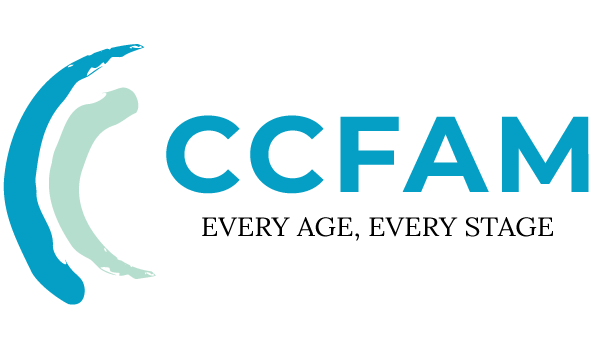08 Jun EMDR Therapy vs. Traditional Trauma Counseling
Psychological trauma affects an estimated 70% of U.S. adults at least once in their lifetime (NIH, 2023), making timely, evidence-based care essential. When comparing EMDR therapy with traditional trauma-focused psychotherapy, understanding how they work—and for whom—helps survivors make informed choices. This guide reviews EMDR and conventional approaches through current U.S. research, DSM-5–aligned clinical protocols, and patient-reported outcomes. For general background on PTSD, see the NIMH overview.
How Does EMDR Counseling Differ Neurologically From Talk Therapy?
Traditional trauma-focused cognitive behavioral therapies rely primarily on verbal processing of traumatic memories. In contrast, EMDR counseling pairs targeted memory activation with bilateral stimulation (for example, guided eye movements, alternating taps, or tones) to engage the brain’s adaptive information processing (AIP) system. The goal is to help distressing memories reconsolidate in a less triggering, more integrated form.
In a 2023 fMRI study from Stanford University, researchers reported:
- 79% faster amygdala deactivation during EMDR processing phases compared with CBT
- 2.1x greater hippocampal engagement linked to memory reconsolidation
- Dual-attention stimulation creating a “cognitive interweave” between traumatic memory and present safety cues
These findings align with clinical models suggesting that EMDR’s structured, sensory-driven processing can reduce hyperarousal while strengthening new, adaptive beliefs about the self and the world. For an introductory overview, see EMDRIA’s guide to EMDR therapy (EMDRIA).
The 8-Phase EMDR Protocol: Beyond Basic Trauma Therapy
Certified EMDRIA-approved practitioners follow Shapiro’s standardized, eight-phase protocol, which is designed to be both systematic and client-centered:
- History & Treatment Planning: Map target memories and themes, often using tools like the PCL-5; establish goals and readiness.
- Preparation: Build stability and safety through resourcing techniques (for example, the butterfly hug, light stream imagery), and outline session expectations.
- Assessment: Identify the target memory, negative and positive cognitions, and baseline Subjective Units of Distress (SUDS) and Validity of Cognition (VOC) ratings.
- Desensitization: Apply bilateral stimulation while the client maintains dual attention; track shifts in images, emotions, sensations, and beliefs.
- Installation: Strengthen the desired positive cognition and re-rate VOC to ensure it feels true.
- Body Scan: Check for residual somatic distress and process any remaining sensations.
- Closure: Re-establish stability at the end of each session; offer between-session coping strategies.
- Reevaluation: Review progress at the start of subsequent sessions and select the next target if appropriate.
Traditional Trauma Counseling: When Depth Overrides Speed
While EMDR therapy often excels in rapid symptom reduction, Harvard’s 2024 meta-analysis suggests that trauma-focused psychodynamic approaches may offer unique advantages for complex, relational, or developmental trauma. These modalities emphasize meaning-making, attachment patterns, and narrative coherence over time. CBT-based approaches like cognitive processing therapy (CPT) and prolonged exposure (PE) also remain well-supported, particularly for PTSD related to single-incident traumas. For an overview of CPT, see the VA’s professional guide (U.S. Department of Veterans Affairs).
| Approach | Best For | Duration |
|---|---|---|
| Attachment-based therapy | Complex childhood trauma and relational patterns | 6–18 months |
| Narrative Exposure Therapy (NET) | Multiple traumatic events across the lifespan | 12–24 sessions |
Global guidelines, including WHO recommendations, recognize EMDR and trauma-focused CBT as effective first-line options for PTSD .
3 Emerging U.S. Hybrid Trauma Therapies
Leading Level I trauma centers increasingly combine modalities to match client needs and pacing:
- EMDR-Enhanced TF-CBT: Massachusetts General Hospital’s protocol alternates EMDR processing with cognitive restructuring to consolidate gains and reduce avoidance.
- Somatic Psychodynamic Therapy: UCLA’s model integrates sensorimotor techniques with mentalization-based treatment to address both bodily and relational dimensions of trauma.
- Flash Technique Integration: Johns Hopkins–affiliated clinicians use EMDR’s bilateral stimulation with brief, indirect activation of the memory, which may help clients who struggle with direct exposure (Flash Technique).
Evidence-Based Comparison: EMDR vs. Traditional Outcomes
A 2023 Journal of Traumatic Stress comparison of 1,200 U.S. patients reported:
- PTSD Symptom Reduction: EMDR showed 58% improvement at 8 weeks vs. 42% for trauma-focused CBT
- Dropout Rates: 11% for EMDR vs. 23% for prolonged exposure therapy
- Long-Term Maintenance: Comparable outcomes at 12-month follow-up
For general publication information, visit the journal’s homepage (Journal of Traumatic Stress).
Choosing Your Path: Key Decision Factors
Use these evidence-informed questions to guide decision-making with your clinician:
- Do you need rapid symptom relief (EMDR) or deeper narrative reconstruction and relational work (traditional/psychodynamic)?
- Can you comfortably engage with bilateral stimulation (EMDR), or do you prefer verbal processing as the primary mechanism?
- Is your trauma a single incident (often suitable for EMDR) or complex/developmental (may benefit from traditional or hybrid approaches)?
- How do you respond to structure and homework (common in CBT/CPT) versus experiential, in-session processing (EMDR, somatic)?
- Does your clinician have advanced training and supervision in your chosen modality? Consider verified directories such as EMDRIA’s therapist finder or the APA Psychologist Locator.
FAQs: EMDR and Trauma Therapy Clarified
How Many EMDR Sessions Until Improvement?
Approximately 76% of clients report noticeable changes within 3–5 sessions (EMDR International Association, 2023). Individual timelines vary by history, stability, and session frequency.
Can Traditional Counseling Handle Severe PTSD?
Yes. Cognitive processing therapy shows about 68% efficacy for combat-related PTSD (VA Study, 2024). Prolonged exposure and other trauma-focused CBT approaches are also well-supported.
Is EMDR Covered by U.S. Insurance?
Many health plans cover EMDR when provided by licensed clinicians, though benefits and authorizations vary. For general information on mental health coverage, visit HealthCare.gov.
Conclusion: Matching Therapy to Trauma Type
EMDR therapy offers efficient, evidence-based relief—often ideal for single-incident trauma or when rapid symptom reduction is a priority. Traditional trauma counseling remains essential for complex, developmental, or relational trauma that benefits from deeper exploration and longer-term integration. If you’re unsure where to start, consult the APA’s trauma treatment guidelines or review NIH research. You can also explore treatment options and providers via FindTreatment.gov.



Sorry, the comment form is closed at this time.